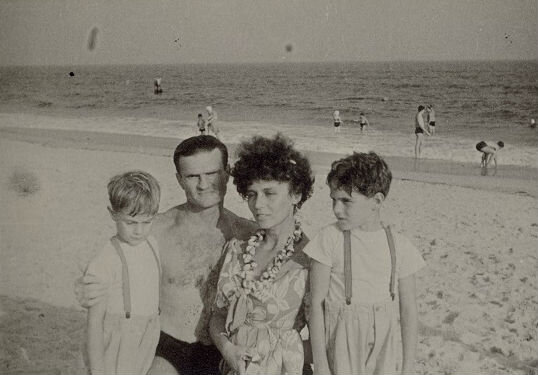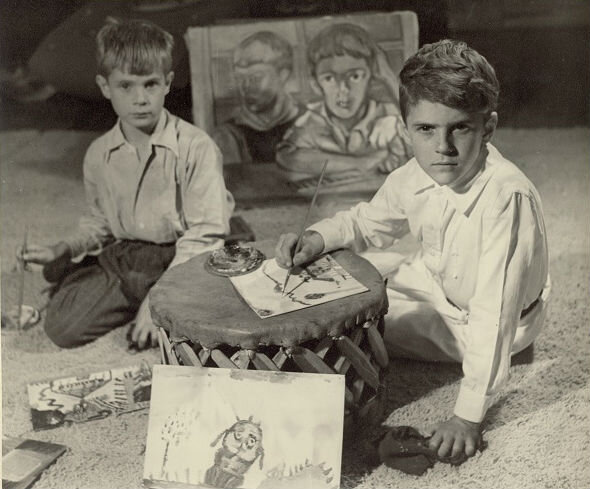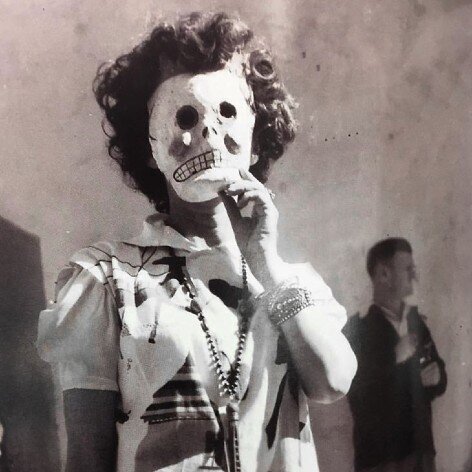Ep. 9: Love, Marriage, Motherhood
Although throughout her life Annette Nancarrow would enjoy other relationships, “Stevie,” as she called Louis Stephens, would be the love of her life. He was a compelling man—charming, muscular, energetic, and intellectually curious. A close match for Annette. They could not resist each other.
Mexico City home of Louis and Annette Stephens (later Nancarrow).
Their life together was very exciting. His inexhaustible energy and enthusiasm in their lovemaking exceeded all of Annette’s hopes. Both gregarious, they made many friends, among them artists, dancers, and bullfighters.
In Mexico City, Annette attended classes at the Academia San Carlos, the oldest architecture and art school on the North American continent, under the tutelage of Manuel Rodríguez Lozano, an accomplished Mexican painter. She later studied at La Esmeralda, where one of her classmates was the wife of artist and sculptor Francisco Zuniga. La Esmeralda was a “no rules” offshoot of Academia San Carlos that attracted the most famous and innovative artists of the period (including Frida Kahlo), as well as those who would become so.
Stevie and Annette married and were living on Providencia Street in Mexico City, where their two boys, Charles and Louis, were born in 1937 and 1938. They led an active, playful social life among creative friends, socializing with most of those in the bohemian artists’ community and becoming close friends with Diego Rivera, José Clemente Orozco, Frida Kahlo, Rufino Tamayo, Roberto Montenegro, Jesus "Chucho" Reyes Ferreira, Jesus Guerrero Galvan, Juan O'Gorman, Wolfgang Paalen, Alice Rahon, Miguel Covarrubias, Federico Cantu, Raul Anguiano, and Francisco Zuñiga. Annette was friendly with David Alfaro Siqueiros and his wife Angelica, but Stevie was not because of their strongly different political views. “On one occasion Diego and Frida came over for lunch in our garden,” Annette recalls during a video interview in later years, “After eating, we all dressed up in Mexican costumes, hats, and ‘charro’ outfits . . . hamming it up and acting silly and dramatic.”
In time, the couple purchased land in Tlacopac and the young architect Manuel Parra, who would soon be recognized worldwide, designed and built their home (see featured photo). During these years, José Clemente Orozco painted his now-famous portrait of Annette wearing two chunky necklaces of her own design made from Mexican pre-Columbian beads, and Diego Rivera painted Stephens holding a cesta, a long, curved wicker scoop strapped to one arm of jai-alai players (one of his favorite sports).
Annette became an informal agent for her artist friends, frequently selling their paintings to their out-of-town visitors. She had a talent for bringing people together in synergistic ways; she was a maven of social energy. She never took a commission but, instead, asked for small sketches or paintings to add to her growing collection, which came to include the work of Juan O’Gorman, Rufino Tamayo, Luis Ortíz Monasterio, and later José Luis Cuevas, Carlos Merida, and Francisco Zuñiga. She arranged for friends to have their portraits painted by the artists she knew, often wearing jewelry she had designed.
Annette at the bullfights, which she loved!
Annette and Stevie frequently attended bullfights (performed every Sunday during the winter months) and became friendly with many of the celebrity bullfighters of those years including Fermín Espinosa (“Armillita”)—probably the mostly highly recognized of all Mexican bullfighters. Speaking about one Sunday in Puebla, Annette described Armilla’s performance: “With one brilliant faena, he cut two ears and a tail and I threw him my yellow coat . . . he picked it up and with a full smile threw it back to me.”
Influenced by the exotic energy, culture, and images around her, Annette gravitated toward a bullfighting theme in her work, combining bull, toreador, and the iconic calla lily in a unique fashion, painted with bold strokes and in dreamlike sequences.
Annette and Stevie also began collecting pre-Columbian stone and ceramic pieces. Almost every day a barefoot peasant would show up at the door clutching a figurine or unusual fragment that had been unearthed in a farmer’s field. Annette’s interest and enthusiasm, as in all things, was intense and she often accompanied archaeologists on digs. She studied for, but never completed, a doctorate in archaeology.
She continued to design her own jewelry, using pre-Columbian jade, jadeite, shell and bone beads, and small figures mounted in silver and brass settings. By the 1940s she would have a collection of her jewelry exhibited at the Museum of Modern Art in New York, and her designs would be featured in Vogue and Women’s Wear magazines. Numerous of her artist friends would purchase and wear her designs, including Frida Kahlo.
These were idyllic, joyful years on a personal level. But war was on the horizon and rough weather lay ahead for the Stephens family and both the United States and Mexico as it became impossible for any of them to remain aloof from events abroad.





